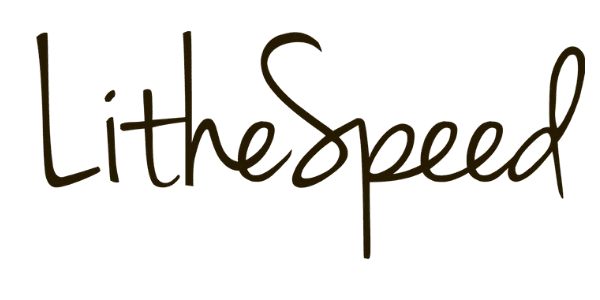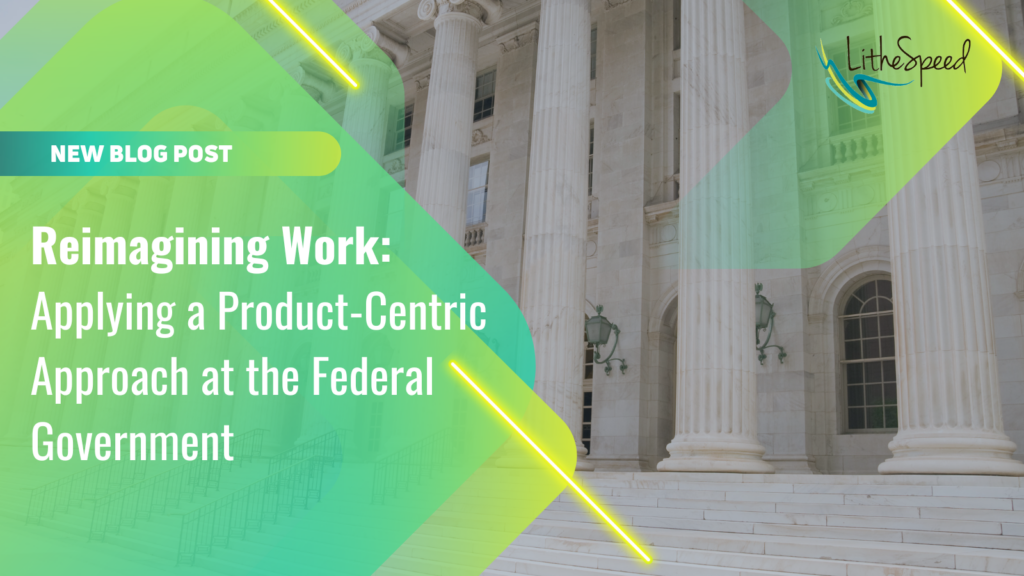What comes to mind when you hear the word “product”?
Is it the latest iPhone? A cutting-edge electric vehicle? Or perhaps your favorite brand of breakfast cereal? For most people, the answer is “yes” to all of the above.
How about products in the Federal Government? Can the concept of a “product” extend to public services and agencies?
Traditionally, a product-centric approach has been synonymous with the private sector, particularly among top tech companies. However, federal agencies are increasingly adopting this approach to meet organizational needs and deliver value to their customers. There are opportunities to apply a product-centric approach to other areas outside of tech.
Defining a Product in the Government Context
At its core, a product is something designed to satisfy a user’s needs. According to the Oxford Dictionary, a product is:
“Anything that can be offered to a market for attention, acquisition, use, or consumption that might satisfy a need. It includes physical objects and services.”
In the context of the federal government, a “product” can be public services, digital tools, or policy programs. The focus is on delivering value to a customer. In the government, a “customer” may look a little different compared with a tech company. Instead of looking at a customer’s engagement on a mobile app, in the federal government, a customer may be defined as another team within the organization, another agency, or even an everyday citizen.

A Personal Experiment
Recently, my family moved to a temporary rental property while our primary home was being renovated. While I consider myself a minimalist, we still accumulated a lot of stuff over the years. We narrowed down what we needed to:
- Basic furniture
- Essential kitchen items
- Clothing and personal care products
- Work and school supplies
We left the rest packed away, anticipating our return to a newly renovated home in a few months. As we lived our everyday life, I quickly realized which items truly delivered value. While I love using my fancy espresso machine, in my daily routine, my reliable Cuisinart coffee maker was the real star. It produced a great cup of coffee every morning to kick start my day.
This experiment with only unpacking the true essentials mirrored how we should think about a “product” — what delivers the most value? Eliminating items that did not add value allowed us to focus our energy on what was most important in our everyday life. It allowed us to live simply and make the best use of our space. And, we reduced the amount of visual clutter that is hard to avoid when you’re living in a smaller space.
The Product Operating Model in Government
The Product Operating Model, popularized by Marty Cagan and Jeff Patton, can be applied to many different settings—whether that’s in your personal life or the federal government. A Product Operating Model focuses on outcomes, as well as a strong focus on value delivery. There are specific ways the Product Operating model differs from the Project Management model, as noted in the figure below.

While government agencies face unique challenges, Marty Cagan and Stephanie Langer also note several advantages in their article “The Product Model in Government” including:
- Mission-driven work: Government employees are often deeply invested in their roles, driven by a sense of public service. They like what they do and are passionate about doing it well.
- Focus on outcomes: Public organizations prioritize efficiency and minimizing waste, which aligns with delivering value. Their budgets may be limited so they need to use their resources well.
- Less competition: Unlike the private sector, the government doesn’t compete with rival agencies, allowing them to focus on quality and public outcomes. The working culture may also include people who have been with the organization for a long time, providing for a more stable, less transient environment.
While the government may face challenges with bureaucracy and limited resources, the focus on value delivery should remain the same. Whether in the public or private sector or even in your personal life, it’s important to focus on outcomes vs. output. I could have taken the time to unpack every box that we moved (greater output), but would it have produced the desired outcome? Absolutely not. I made a deliberate decision to focus on unpacking the highest value items we use every day and ignored the boxes left in the basement.
Real Life Application
We’ve seen several key benefits for government agencies adopting the Product Operating Model. While every organization is different, we’ve noted several themes that apply more broadly.
- Optimizing Resources
Government agencies often have limited resources—both in terms of budget and staffing. Employees may take on multiple roles, from handling routine administrative tasks to scheduling meetings, making it difficult to focus on higher level, strategic work. By applying the Product Operating Model, we found that agencies can make deliberate decisions about resource allocation, ensuring that employees focus on high-value tasks.
- Improved Communication and Collaboration
Many federal agencies operate under traditional siloed management structures, with hierarchical reporting and limited cross-team communication. This can slow down delivery and impact team collaboration. By experimenting with basic concepts like shared Kanban boards and establishing cross-team checkpoints, we saw a significant improvement in workflow and collaboration. Making work visible helped streamline processes and encourage teamwork. Creating work-in-progress limits dramatically increased throughput at a higher level than organizations that may already have good cross-team communication.
- Prioritization of Work
One of the biggest shifts for government teams was learning to say “no.” A high level of customer service and commitment to the organization’s mission can lead to overcommitting. The traditional command and control management model also limited the ability for employees to push back on requests from their management team. This leaves teams scattered and unable to focus on their most important work. By adopting the Product Operating Model, teams began to focus on a shared vision, allowing them to prioritize high-value tasks and deliver results more effectively.
Final Thoughts
The cross-pollination of ideas between sectors is enabling government agencies to think differently about how they deliver services. The Product Operating Model helps them focus on value—what works best for their customers—while making the most of their limited resources.
By fostering a culture that prioritizes outcomes over outputs, government agencies can make progress in efficiency and innovation. While there are always opportunities for improvement, we’ve seen cultural shifts that impact the organization for the better. The application of the Product Operating Model in the federal government offers exciting possibilities for the future of public service.
Reference
“The Product Model in Government ” https://www.svpg.com/the-product-model-in-government/
“Everything is a Product” https://jpattonassociates.com/everything-is-a-product/
Gartner CIO Agenda. 2019. Moving from Project to Product.
Kersten, Mik. Project to Product: How to Survive and Thrive in the Age of Digital Disruption with the Flow Framework. IT Revolution Press (2018).
IT Revolution DevOps Enterprise Forum (2019). The Project to Product Transformation: Practical Guidance from Fourteen Enterprise Journeys
“The PMO is Dead, Long Live the PMO” https://www.youtube.com/watch?v=R-fol1vkPlM

